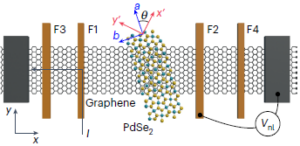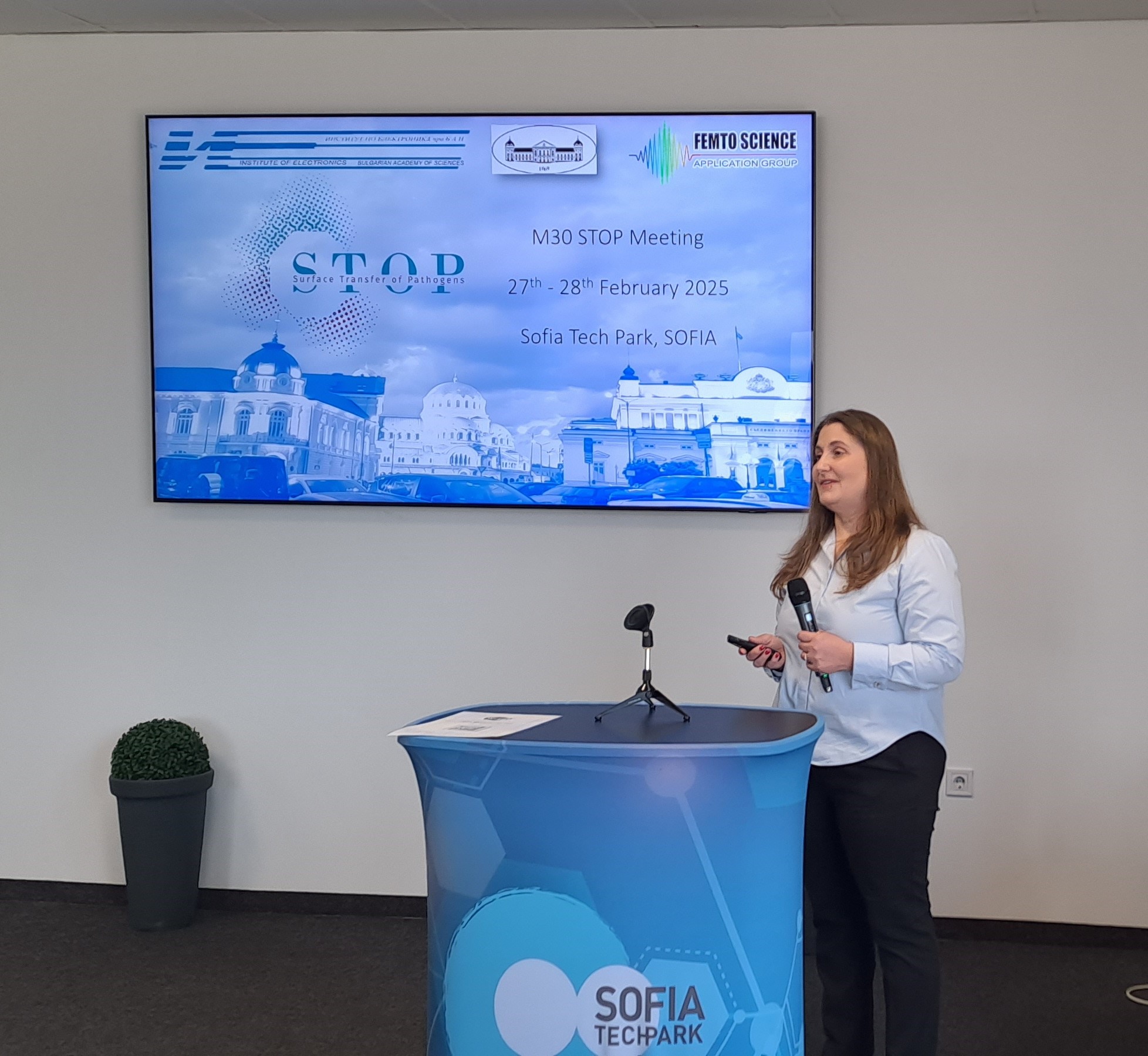 Schema of the graphene – PdSe2 device to study the proximity effect induced by PdSe2 (F1-F4 ferromagnetic contacts, 2 metal contacts (in grey))
Schema of the graphene – PdSe2 device to study the proximity effect induced by PdSe2 (F1-F4 ferromagnetic contacts, 2 metal contacts (in grey))
Researchers from the “Acad. Jordan Malinowski” Institute of Optical Materials and Technologies (IOMT-BAS) in collaboration with ICN2 and ICMAB-CSIC (Spain) have demonstrated how the interaction between two two-dimensional (2D) materials (graphene and palladium diselenide (PdSe2)) forming a van der Waals heterostructure can improve the spintronic functionality of graphene. Graphene and PdSe₂ are considered among the key materials for future ultrathin spintronics due to their outstanding electrical properties.
PdSe₂ has been demonstrated to induce significant changes in the transport and dynamics of spin currents in graphene, providing new opportunities to control them. PdSe₂ is found to induce spin-orbit coupling (SOC) in graphene where the proximity of PdSe₂ activates a quantum effect that causes electrons to be mobile and their spins to be coupled. This phenomenon is of particular importance because it allows spin control without relying on external magnetic fields. Strong in-plane spin anisotropy of the graphene-PdSe₂ heterostructure at room temperature is also demonstrated.
The research represents a significant step in elucidating the spin physics of van der Waals heterostructures and provides new opportunities for precise spin manipulation revealing great potential for the development of next-generation spintronic devices.
Some of the results obtained are under the “Dissipationless Τopological Channels for Information Transfer and Quantum Metrology” H2020-FETPROACT TOCHA project led by Prof. DSc. Vera Marinova from IOMT-BAS and published in one of the most prestigious international scientific journals: Nature Materials (2025)





